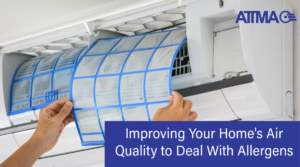Source: https://projectscot.com/2023/07/no-barrier-to-air-tight-future-for-scotland/
Hugh Franklin, head of AeroBarrier UK, explains why technology holds the key to meeting ambitious decarbonisation targets in Scotland’s housing sector.
Scotland has long focused on energy-efficient regulation and is one of the front runners for sustainable buildings in the UK.
The newest iteration of Scottish Building Regulations Section 6 which was implemented on 5th June 2023, all domestic dwellings must be tested for air tightness to CIBSE TM23. Scottish regulations are stricter than UK regulations stating a maximum air loss figure of 7m3/hr/m2, compared to 10m3/hr/m2 in the UK.
It should also be noted that from December 2024, all new housing in Scotland will be built to the highest energy efficiency standards, a Scottish Passivhaus equivalent. However, focus on new builds ignores existing building which just under half of dwellings in Scotland fail to meet energy efficiency standards of an EPC rating of C or above.
Improving air tightness can help reduce moisture permeation that causes health issues for residents. In Edinburgh alone, cases of dampness on social rented homes have increased to 1,215 in 2022 compared with 122 in 2019 according to local council data.
How to See The True Impact?
It’s hard to see the true impact of the new regulations in new and existing housing stock however technology is our friend in finding these answers. Traditionally construction business filled holes with caulk, tape and foam. This is manual, time consuming and expensive and you’re not able to guarantee a specific level of air tightness, even when carried out by highly-skilled people. Even tiny holes in the building envelope will significantly impact air tightness in a property.
There are currently around 231,000 people in Scotland that are employed in construction but an increase of 1.79% (around 4000 more people) is needed to meet expected demand. Upskilling construction workers so they can use more sustainable and efficient technologies and products is the key to hitting net zero targets. Encouraging the younger generation to get into construction will also help.
What’s the Solution?
Scotland’s net zero emissions target date of 2045 is ahead is ahead of many other countries which include the UK which target is in 2050. This isn’t possible without collaborative, proactive action from the government, industry and innovators.
One solution that can guarantee air tightness levels and meet these zero targets in Aerobarrier. Aerobarrier UK pressurises a property and uses a waterborne, non-toxic mist of particles to plug 100% of all unwanted gaps. The sealant mist is drawn into visible and invisible gaps where it solidifies to create a seal and improve air tightness in just a few hours.
An operator with a laptop, controls the level of air tightness seal required by the contractor so they can achieve the required certification and prove compliance with Scottish regulations (when ventilation methods are considered).
Scotland and its building regulations are pacing the way for the UK to consider a more sustainable future. The Scottish Government need to enforce their vision, set clear goals and provide guidance about how people can use existing innovations like AeroBarrier to achieve the regulations they are implementing
Find out who our members are in Scotland and the rest of the UK by clicking here





